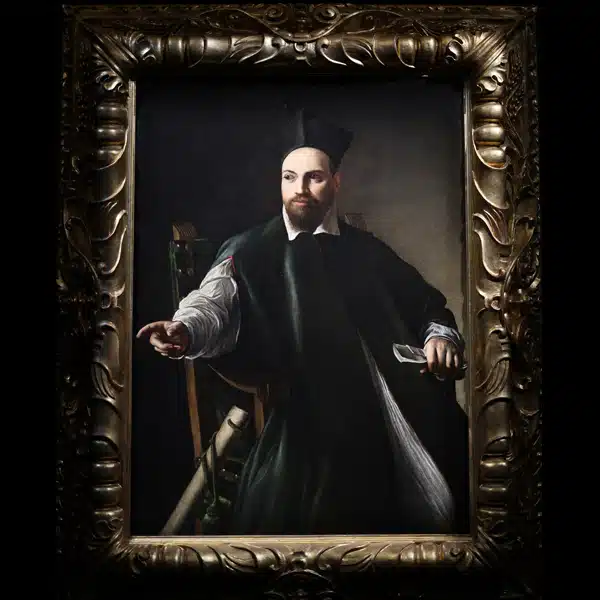
Bottom photo: King of Hearts via Wikimedia Commons (CC BY-SA 3.0)
Pairing a priceless permanent collection with a captivating history, it is no wonder why Paris' Musée du Louvre is the most visited museum in the world. Though it is renowned for its role as a major arts institution, it has not always exhibited masterpieces during its 800 years of existence.
Before housing famous sculptures and paintings, the Louvre was home to France's kings and queens. And prior to its stint as a palace, it was a fortress intended to protect the city of Paris from invasions. Here, we explore the museum's unique history, tracing its fascinating evolution from medieval castle to world-class art museum.
The Louvre Fortress
In the late 12th century, King Philippe Auguste decided to fortify Paris with a wrap-around wall. While most of the barrier fit neatly around the city, the Seine River left parts of the border open to invaders. To make up for a particularly weak spot, Philippe Auguste opted to construct a castle next to the wall. As Paris was much smaller at this time, this castle was situated on what would have been the city's outer limits.
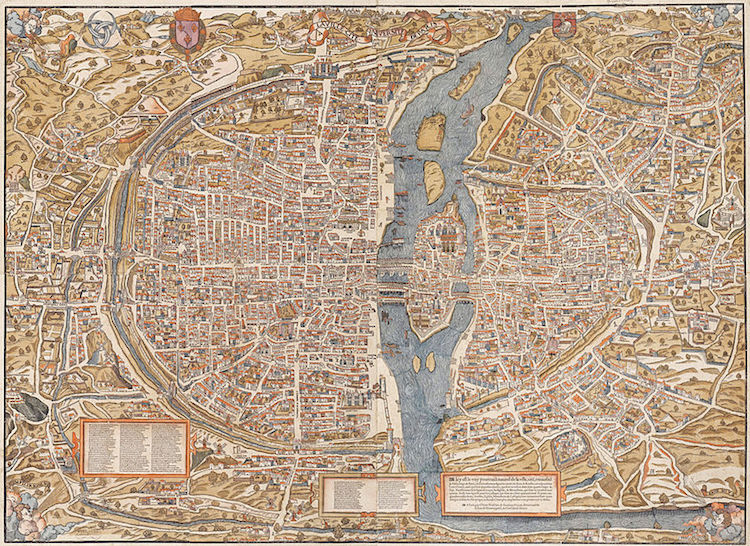
Photo: Universiteitsbibliotheek Vrije Universiteit via Wikimedia Commons (Public Domain {PD-US})
The layout of this structure did not look like the Louvre today, which is built around courtyards and features prominent, protruding wings. Instead, “the building designed by Philippe Auguste’s engineers was square in plan, protected by a moat, and equipped with circular defensive towers at its corners and in the middle of its sides,” the Louvre explains. As these towers were spaced 25 meters apart—the distance an arrow could travel—guards were able to shoot invaders with their bows no matter the attempted point of entry.
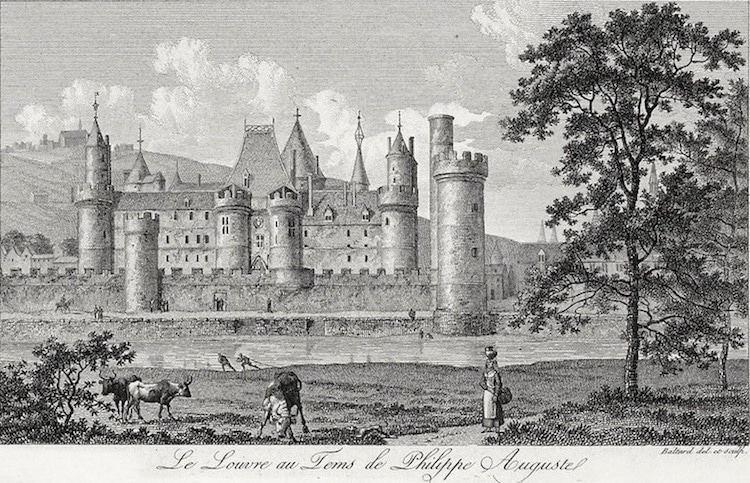
Photo: Réunion des musées nationaux et du Grand Palais des Champs-Élysées via Wikimedia Commons (Public Domain)
In the 13th century, King Louis IX (known also as Saint Louis) increased the size of the castle by adding extra salon-style rooms. As these salles served no defensive purpose, their installation marked the beginning of the castle's transformation from a foreboding fortress to an elegant palace.
The Louvre Palace
As Paris' borders widened, it became clear that the fortress was no longer in a strategic military location. Kings, however, made use of the structure, employing it as a safe hideout during riots. It served this makeshift purpose until 1528, when King François I officially declared the Louvre as his place of residence.
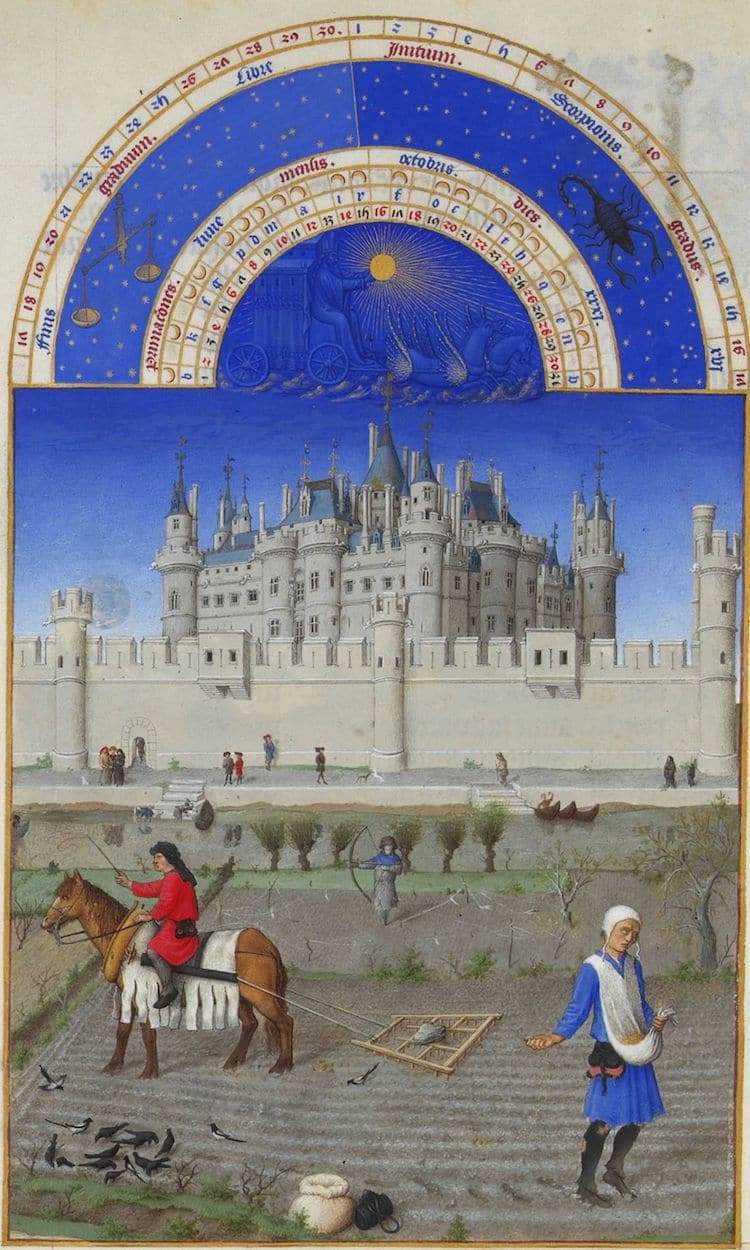
‘Très Riches Heures du duc de Berry' (ca. 1440) (Photo: R.M.N. / R.-G. Ojéda via Wikimedia Commons (Public Domain {PD-US}))
To fulfill this decree, he demolished its dungeon and began building a Renaissance-style palace on its grounds. The palace's renovation outlasted the king, whose son, King Henri II, and daughter-in-law, Catherine de' Medici, drastically transformed the grounds after his death.
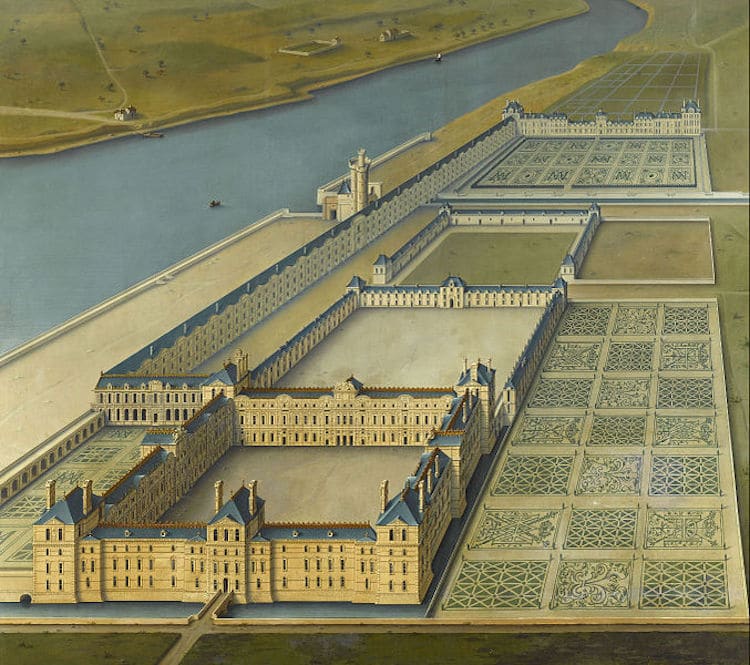
The Louvre in 1600 (Photo: Henri-V.Culture via Wikimedia Commons (Public Domain {PD-US}))
In the early 17th century, King Louis XIII added wings to the palace and lengthened those already in existence. Later on, his son, Louis XIV (known also as the “Sun King”) added numerous galleries that remain today, including Charles Le Brun‘s gilded Galerie d'Apollon (“The Apollo Gallery”). From 1673, these galleries housed many of the king's priceless paintings, with some even remaining after he officially moved court to his Versailles château in 1682.
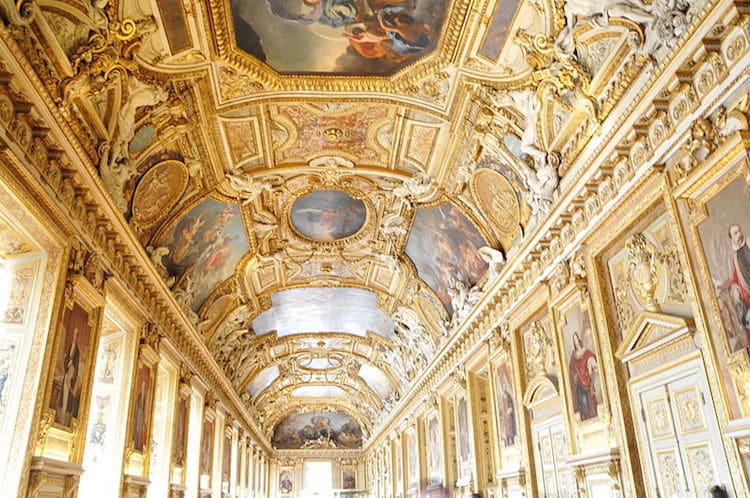
The Apollo Gallery (Photo: Rob Bendall via Wikimedia Commons (Public Domain))
While the king no longer lived at the Louvre, select art lovers were invited to view his collection from 1684, signifying the start of the Louvre museum.
The Louvre Museum
The Louvre acted as a private, miniature museum until the middle of the 18th century. King Louis XV added to its growing collection, which visitors could view on select days of the week. It was not until the French Revolution, however, that the building was finally completed and deemed a public museum. It officially opened its doors on August 10, 1793 under King Louis XVI.
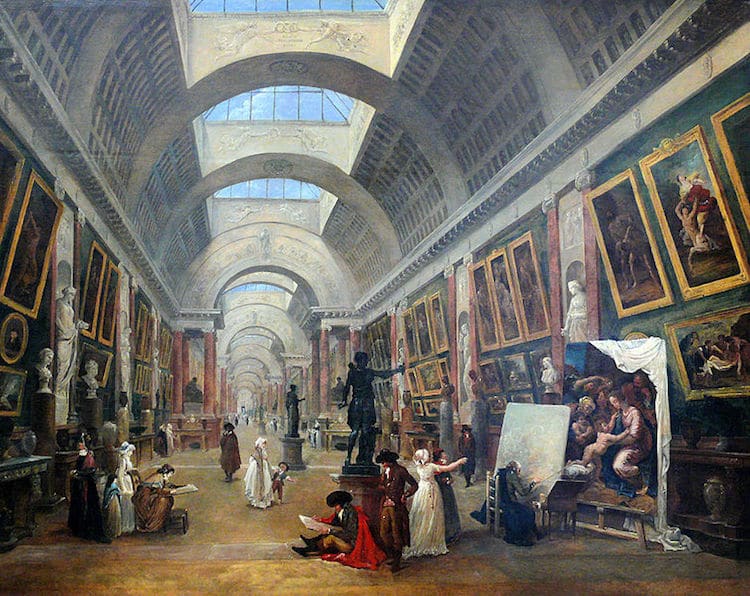
Hubert Robert, ‘Projet d'aménagement de la Grande Galerie du Louvre' (1706) (Photo: MOSSOT via Wikimedia Commons (Public Domain {PD-US}))
Between its grand début and the middle of the 19th century, the Louvre underwent little construction, apart from a slight expansion by Napoleon I and the transformation of many of its exquisite interiors. However, from 1850 onward, it experienced a string of renovations under a range of leaders, from Napoleon III to President François Mitterand.
In 1989, I.M. Pei's iconic glass Louvre Pyramid entrance added a touch of modernity to the museum, prompting a surge in visitor numbers that has lasted to this day. While most of these guests flock to the Louvre to gaze upon priceless works of art like The Mona Lisa and The Venus de Milo, many also undoubtedly hope to learn more about the celebrated site's compelling history.

Photo: Euku via Wikimedia Commons (GNU FDL)
Related Articles:
Top 10 Cities to Visit If You Absolutely Love Art
How Skilled Copyists Leave the Louvre with a Masterpiece Every Year
Street Artist JR Makes the Louvre “Disappear” with Creative Optical Illusion













































































